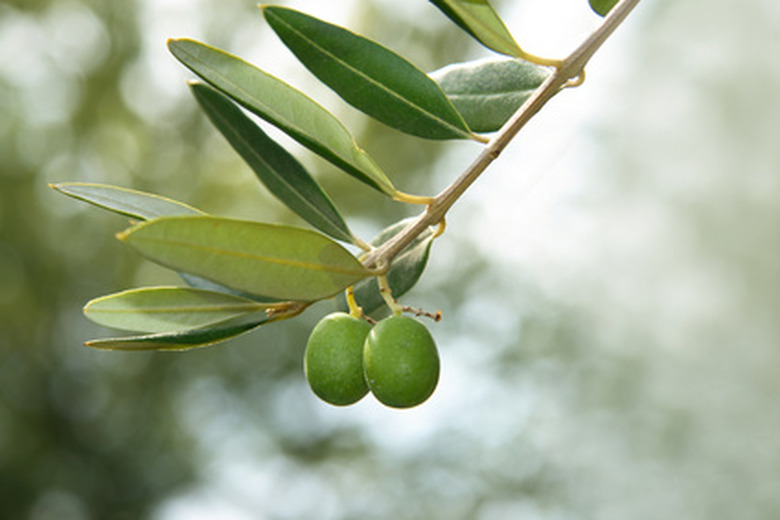Olive Trees In New Jersey
They don't call New Jersey the Garden State for nothing. New Jersey is hospitable to a variety of trees and plants that are not indigenous to the area, and some that are even tender. Olive trees are found in Mediterranean climates and enjoy the humidity and heat that those areas provide. Growing an olive in New Jersey is no challenge in summer because the area has hot humid summers, but winter is another matter. Olives grown in the Garden State have to withstand 16 inches of snowfall annually and a temperature range of 31 to 75 degrees Fahrenheit.
Olive Characteristics
Olives have pinnate leaves that remain evergreen and are gray green in color. The tree can get up to 50 feet tall and 30 feet wide. Olives can live for 500 to 1,000 years and their trunks achieve a twisted, gnarled appearance. The flowers are fragrant small, white blooms that are usually self-pollinating. The fruit is called a drupe and is extremely bitter until it has been processed. Olives need to be planted in full sun in well-drained soil. Windy conditions do not bother olives, but will sculpt the branches. Olives seed but do not produce true fruit. The easiest propagation is from leafy cuttings or root suckers.
- They don't call New Jersey the Garden State for nothing.
- Olives can live for 500 to 1,000 years and their trunks achieve a twisted, gnarled appearance.
Climate
Olives are native to Turkey and Syria but spread to Mediterranean regions. It is a semi-tropical fruit tree that requires temperatures around 70 degrees Fahrenheit to continue growth and a period of cool nights with warm days to set fruit buds. The olive is the hardiest of the tropical fruit trees but will become damaged in temperatures that are near 17 degrees Fahrenheit with more severe damage at even lower temperatures. Olive trees grown in New Jersey will have to be placed somewhere sheltered or moved indoors for winter to mimic their natural growing conditions and keep them from becoming winter statistics.
New Jersey
The Garden State is considered a moderate climate. It has identifiable seasons and very cold to snowy winters. New Jersey is a leading producer of fresh fruits and vegetables and has 820,000 hectares in farm production. The area is humid year round and annual rainfall is plentiful. The winters can get very cold and coastal hurricanes and inland flooding are common. The summers are warm and sunny.
- Olives are native to Turkey and Syria but spread to Mediterranean regions.
- The olive is the hardiest of the tropical fruit trees but will become damaged in temperatures that are near 17 degrees Fahrenheit with more severe damage at even lower temperatures.
Planting an Olive Tree in New Jersey.
The olive trees heat and cold intolerance do not make it an ideal candidate for New Jersey growing. However, the fruits are grown in British Columbia and the Pacific Northwest and the web site nj.com featured stories about palms and figs being grown in New Jersey. The climate and soil needs are similar for figs so it stands to reason that an olive can be grown in Jersey. Planting the tree in a pot so it can be moved will enable it to be protected in case of a hard freeze. The tree can also be covered with a frost barrier to trap heat inside the core of the tree. Olea europaea is the hardiest olive variety and would be a good choice to try in New Jersey.
Prevention/Solutions to Cold Damage
Olives should have soil mounded around their trunks up to 1 1/2 feet high until they are five years old. This will give insulation to the roots as they deepen and establish. The tree should be covered if temperatures dip below 17 degrees Fahrenheit. When damage does occur from a New Jersey winter cold, the dead material should not be pruned out until new growth shows up the following season.
- The olive trees heat and cold intolerance do not make it an ideal candidate for New Jersey growing.
- When damage does occur from a New Jersey winter cold, the dead material should not be pruned out until new growth shows up the following season.
